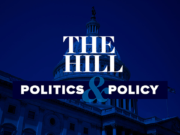Higher campaign costs are neither inherently good nor bad. They result, mainly, from tradeoffs we have chosen, wittingly or not, to make.
For example, nominating candidates through primaries, rather than caucuses or conventions, substantially raises the cost of seeking office. Would we give up primaries? Probably not. But how about reducing early voting? Just 20 years ago there was no such thing. Early voting raises the cost of campaigning, especially for state and local offices, as candidates must begin communication and turnout efforts earlier.
Here’s another possibility: create more districts. The United States has 40 percent more people than it did in 1980. But the size of most state legislatures is unchanged, so more money must be spent in any given race to reach and turn out voters. More populated districts also make traditional low-cost campaign tactics, including door-to-door campaigning, picnics and rallies, less effective, given their limited reach. Adding five or six seats to a state senate—few currently have more than 40 members— could reduce the electorate in each district by 20 percent or more. Surely a 35-member senate could function as effectively as a 30-member senate.
Remember that campaign spending has benefits. Studies by University of Minnesota’s John Coleman have shown that higher campaign spending boosts voter knowledge, especially for those least informed about politics and government. Higher spending also correlates with competitive races, which many consider a good thing. Given the benefits of higher spending, perhaps we should consider a “supply side” approach, aimed at reducing the effort needed to raise funds.
One idea is for government to pay for campaigns. Whether cash-strapped states should do this is a difficult question. Unfortunately, there is little evidence that government financing works. An Institute for Free Speech study in Connecticut found no change in legislative behavior after that state implemented public funding. More relevant to the effect of campaign financing on democracy, we studied Arizona and Maine and found that government funding did not increase the number of nontraditional candidates. Indeed, government funding was associated with a decline in the number of women legislators. Nor have studies found a link between government funding and higher confidence in or satisfaction with government.
If not government funding, what is the answer?
In the past decade, 18 states have raised contribution limits. But that means more have not. And almost no states have raised their limits to fully account for inflation since the limits were first imposed. Higher limits can reduce time spent fundraising.
Additionally, many states increase compliance costs (a campaign cost) and smother true grassroots campaigns with needless, and needlessly complex, regulations. People should not be discouraged from participating in politics by spools of red tape, but too many states have intricate, confusing campaign laws that desperately need simplification.
Meanwhile, provisions of the federal government’s 2002 Bipartisan Campaign Reform Act, aka the McCain-Feingold Act, have severely hampered fundraising by state and local party committees. State officials should insist that Congress amend the law to free up local parties, easing the burdens of candidate fundraising and enhancing grassroots participation.
Efforts to lower spending through limits and regulation have been unsuccessful—after all, we have far more regulation than 40 years ago. Lower spending also comes at the expense of voter knowledge. Doing away with needless regulations, and thinking about things such as early voting or restructuring legislative chambers, will make it easier and less costly to run for office, without limiting political speech.
This post originally ran in State Legislature Magazine on May 1st 2018.














